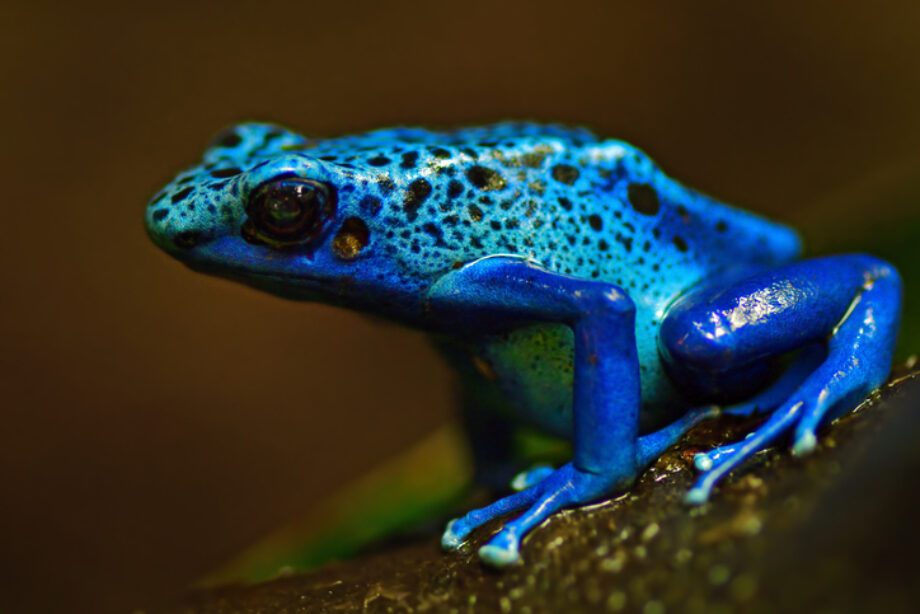Ready to learn about Poison Dart Frogs? Let’s jump in!
Poison frogs – also called poison arrow frogs, poison dart frogs and dendrobatids – are the most brightly colored frogs in the world. They live in wet, tropical forests in Central and South America where their diet contributes to the toxins they secrete through their skin.
These frogs are commonly known as poison arrow or poison dart frogs because native Indian tribes reportedly rubbed their arrow tips on the frogs’ backs before hunting. However, only three species have actually been documented being used for this purpose, including the golden poison frog, the most toxic of all frog species.

All three of these documented species belong to the genus Phyllobates rather than the genus Dendrobates – which includes the most brightly colored frogs that are most often recognized as poison dart frogs. The golden frog secretes the alkaloid toxin batrachotoxin, which is of interest to medical researchers who are trying to develop muscle relaxants, heart stimulants and anesthetics from the toxin.
Poison frogs are known for their beautiful colors, and amphibians that have toxic skin secretions tend to have bright warning colors or patterns. It is theorized that these colors function as a visual warning, a learned response on the part of the predator.
A predator that finds a certain kind of amphibian to be distasteful will associate the warning color with the bad taste and, after one or more such experiences, will recognize the distasteful species and refrain from attacking. Aposematic coloration usually involves red, orange or yellow. Some animals have bright coloration that does not correlate to toxicity, presumably mimicking those animals in which color truly is a warning.
Poison frogs can be heard calling in the flooded forest. Most species of frogs have well-developed vocal structures capable of producing a variety of sounds that serve to attract mates, advertise territories or express distress.
Poison dart frogs display elaborate and diverse courtship behaviors. In general, the male will lead the female to a site that he has chosen to lay the eggs. Most of these species of frogs deposit their eggs inside leaf-litter, where it is dark and moist.
Courtship behavior can last for several hours and normally, the pair visit several deposition sites before they start mating. Courtship continues at the deposition site where the frogs start a mating “dance” consisting of mutual stroking and cleaning of the surface of the leaves.
Learn something new? Let us know! Info@bluezoo.us
